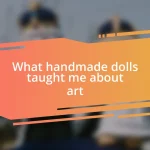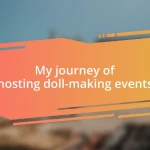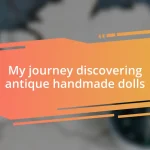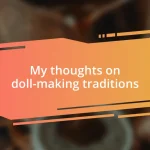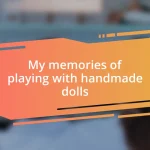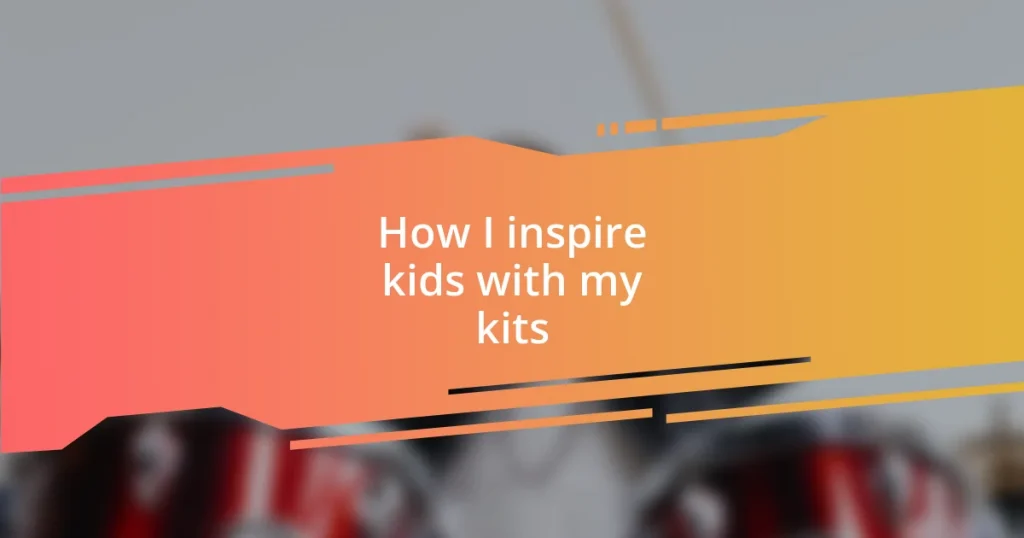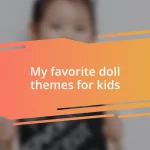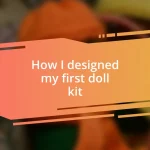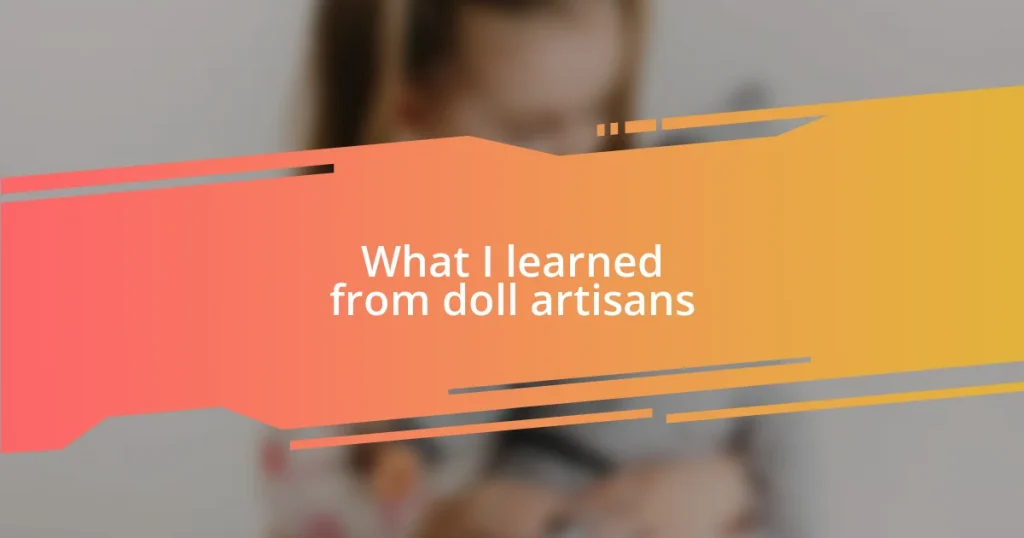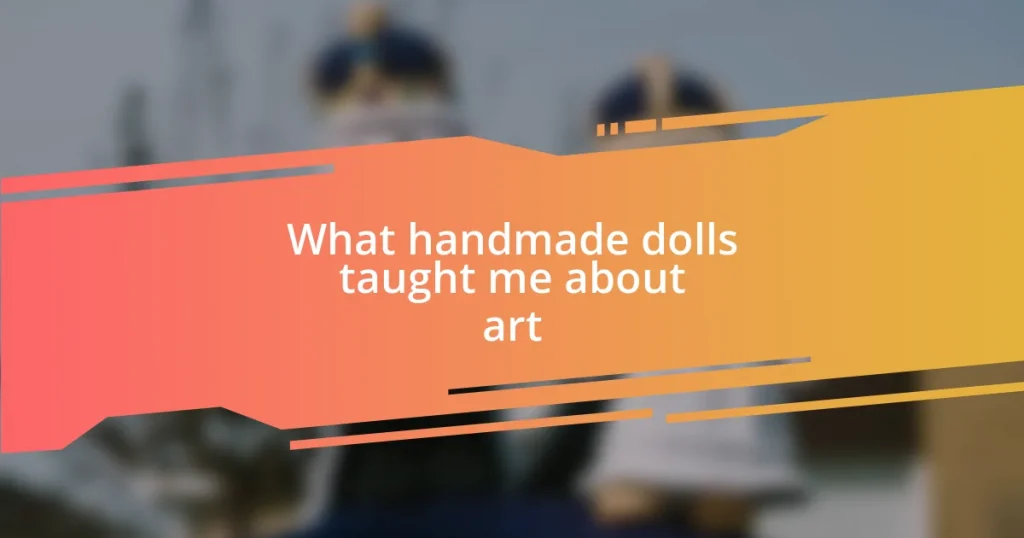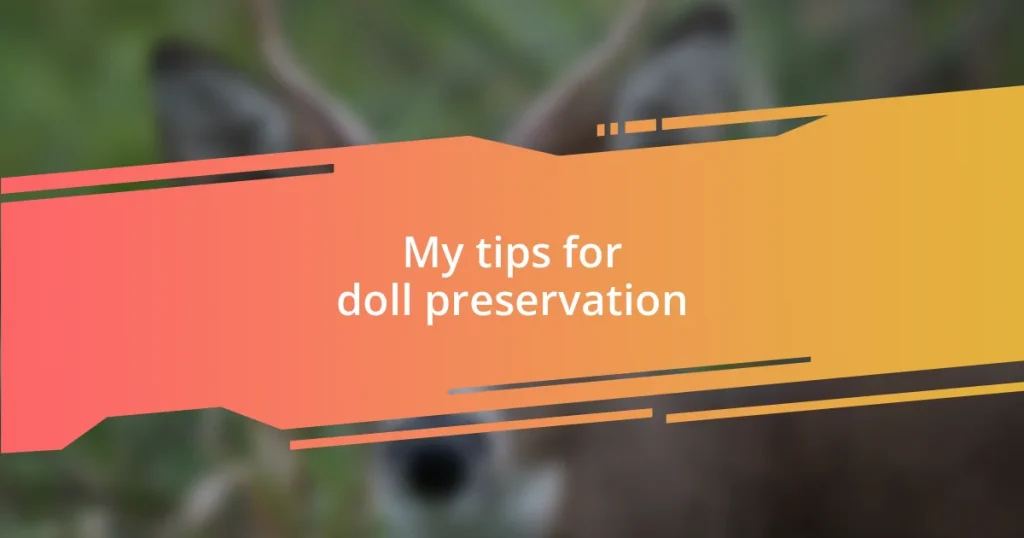Key takeaways:
- Play is essential for children’s development, fostering creativity, social skills, and resilience through experiential learning.
- My kits offer interactive and flexible hands-on activities that cater to various learning styles, encouraging creativity and collaboration among kids.
- Success stories from children using the kits highlight the transformative power of creativity, self-expression, and the significant role of parental and educator involvement in the learning process.
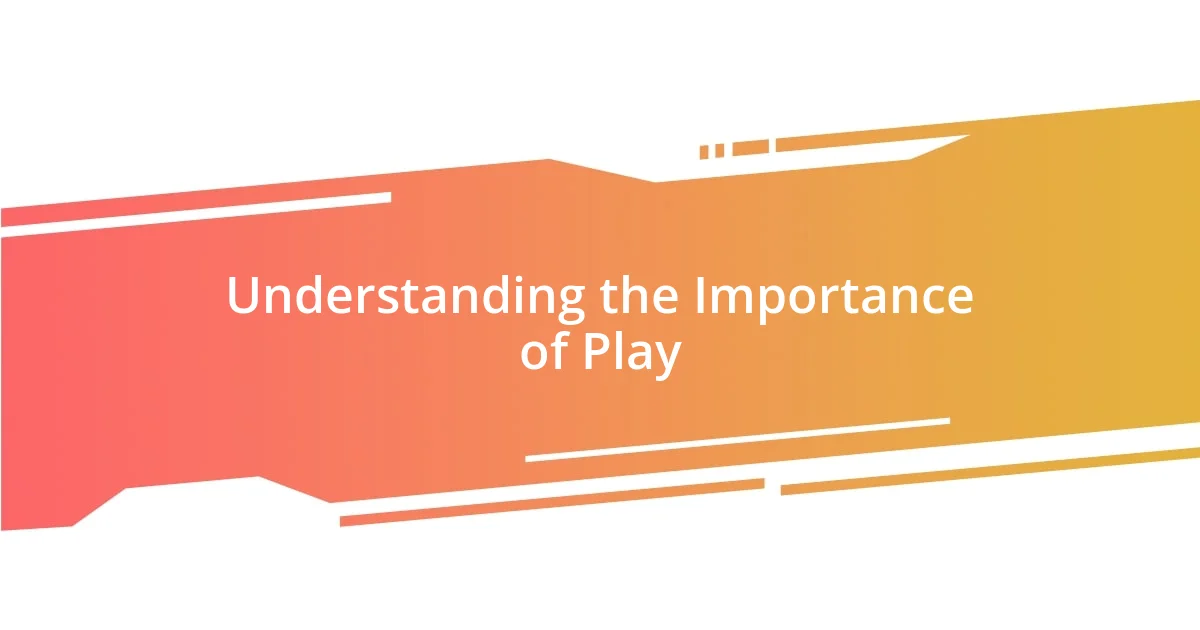
Understanding the Importance of Play
Play is not just a fun activity for kids; it’s a vital aspect of their development. When I see children dive into a game, I witness their creativity blooming and their social skills sharpening. Does it ever make you wonder how a simple game can teach teamwork and problem-solving?
From my experience, play offers a safe space for children to express their emotions. I remember when I facilitated a group activity, and one shy child surprised everyone by leading the group in a game. It was a beautiful moment that highlighted how play can empower kids, giving them the confidence to shine in ways they might not in a more structured setting.
Moreover, play fosters resilience. I’ve watched kids stumble during a game and then giggle as they picked themselves up and tried again. Isn’t it fascinating how these early experiences with failure can build grit and determination in children? Through play, kids not only learn the rules of games but also the unwritten rules of life.

Overview of My Kits
My kits are designed to ignite curiosity and foster creativity in children. Each kit is meticulously crafted to encourage hands-on exploration, where kids can immerse themselves in activities that blend learning with fun. I truly believe that when children can visualize concepts through tangible materials, it makes the learning experience more meaningful.
Here’s a snapshot of what my kits offer:
- Interactive Materials: Each kit contains unique items that promote engagement.
- Themed Activities: Kids can explore a variety of topics, from science to art.
- Guided Instructions: Comprehensive guides make it easy for parents to assist.
- Flexible Learning: Activities cater to various learning styles and age groups.
- Personal Touch: I include stories and tips based on my own interactions with kids, enriching the experience.
When I first started creating my kits, I was inspired by watching kids light up with joy when they discovered something new. I recall a moment when a group of children were so engrossed in a science experiment that they forgot about the world around them. Their laughter and excitement reminded me why I’m passionate about these kits; they don’t just facilitate play, they create unforgettable memories.
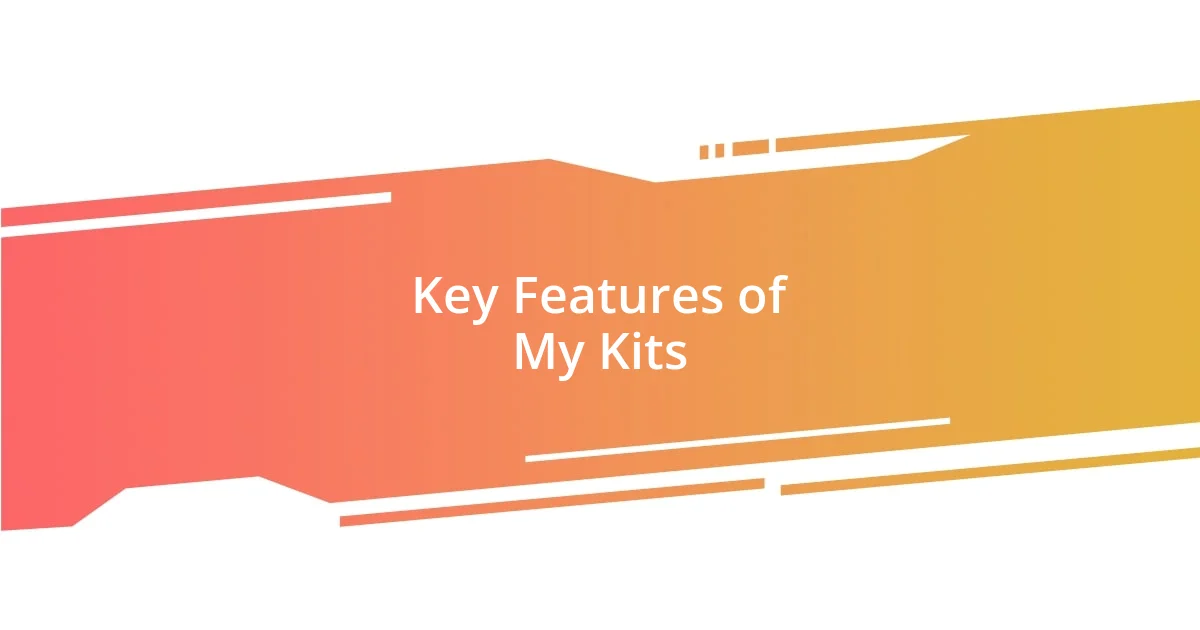
Key Features of My Kits
The essence of my kits lies in their adaptability. I’ve noticed that no two children learn the same way, and that’s why each kit is designed to cater to different interests and learning styles. For instance, during a recent activity, one boy thrived when he was able to build a model while another girl preferred illustrating her ideas through drawings. This flexibility sparks engagement, ensuring that every child finds a way to connect with the material.
Moreover, the interactive elements created a buzz during my last workshop. When kids get their hands on materials, it’s like watching light bulbs flicker on. I remember one young girl who, after experimenting with colors in her kit, proudly announced that she had created a new shade. Her smile was infectious as she explained her “discovery” to her peers, showcasing how my kits encourage not just participation, but also ownership of the learning process.
Finally, the personal stories I weave into the kits truly set them apart. These aren’t just lessons; they’re experiences that resonate with children. I once shared a story about building a fort in my backyard, which inspired a whole afternoon of creativity with a group of kids who then constructed their own mini-forts using the kit materials. It’s heartening to see how relatability can jumpstart imagination.
| Feature | Description |
|---|---|
| Interactive Materials | Engaging items that enhance hands-on learning. |
| Themed Activities | Variety of topics making learning diverse and enjoyable. |
| Guided Instructions | Clear guides for parents to support their children. |
| Flexible Learning | Adapts to various learning styles and age groups. |
| Personal Touch | Includes anecdotes based on real experiences to enrich learning. |
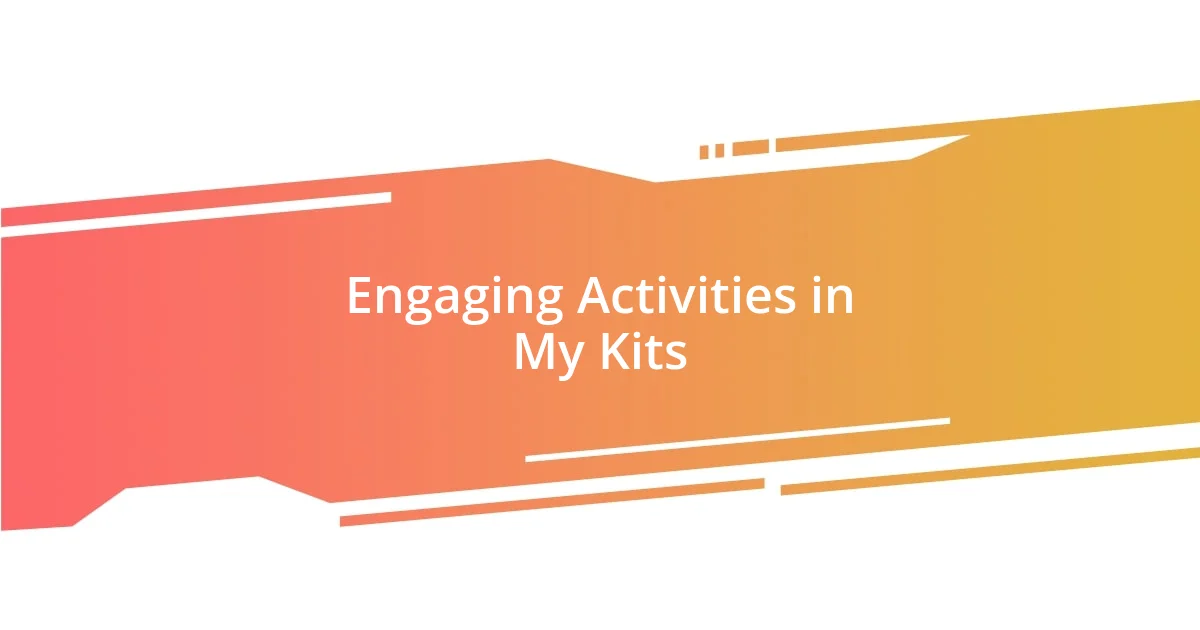
Engaging Activities in My Kits
The activities in my kits are crafted to spark imagination while providing a sense of accomplishment. One day, I watched a group of kids transform simple paper into intricate origami creations. Their focus was mesmerizing, and their triumph with each fold reminded me of my own childhood experiences where I felt invincible after mastering a new skill. Isn’t it amazing how a small piece of paper can unlock such creativity?
I’m particularly proud of the themed activities that bring specific subjects to life. In one instance, kids created solar system models using everyday materials from the kits. As they painted planets and discussed distances, I felt the room buzz with curiosity. It made me think—what if every lesson could be this engaging? When children realize they can bring concepts to life, it fosters discussions that go well beyond the activity itself.
Additionally, the guided instructions truly make a difference in navigating the creative process. I recall a parent sharing how they had sat down with their child to build a volcano together. They ended up bonding over the project in ways they hadn’t anticipated. This interaction underscores a crucial point: when learning becomes a shared journey, isn’t it more impactful? It’s this collaborative spirit that I strive to cultivate through engaging activities in my kits.
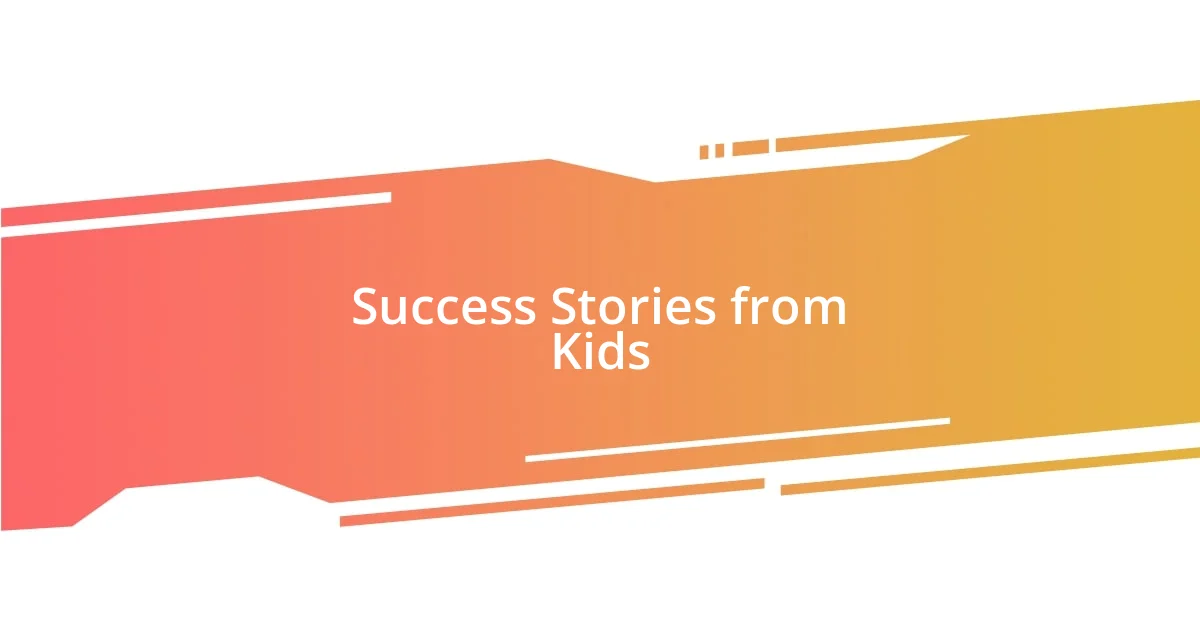
Success Stories from Kids
I’ve had the privilege of witnessing some truly remarkable moments from the kids who use my kits. One time, a shy boy surprised everyone by sharing his creation during a group session. He had made a puppet out of materials from the kit, giving it a voice and a persona that had everyone laughing. That moment was electric—his confidence soared, and it reminded me how important it is for kids to express themselves without hesitation. Have you ever seen a child light up after sharing something they made? It’s pure magic.
Another success story that sticks with me is a girl who took her watercolor set from the kit and decided to host an “art show” in her backyard. She invited her friends and used the skills she learned from our workshop to guide them through the painting process. Her excitement and leadership brought everyone together, turning a sunny day into a celebration of creativity. It made me think about how these kits not only teach skills but also foster community and collaboration. Isn’t it wonderful when kids take initiative like that?
One of the most touching moments came from a boy who was initially hesitant to join in. Slowly, he began rearranging the materials into a miniature city, explaining each part with a growing sense of pride. What struck me was his transformation from quiet observer to enthusiastic creator—a tangible reminder that often, all a child needs is a nudge of encouragement to unleash their imagination. It leaves me wondering, how can we continue to support their journeys into creativity and self-expression?

Tips for Parents and Educators
I often find that the best moments of learning happen when parents and educators collaborate. I’ve seen firsthand how a simple discussion between a parent and a child about their project can deepen their understanding. It leads me to wonder: what if we encouraged more of these conversations around creativity? When kids feel their thoughts are valued, they’re more likely to take risks in their learning.
Using these kits at home or in the classroom can also serve as a fantastic bridge between different subjects. For example, after completing a science project, a teacher once took the time to relate the activity to real-world applications, sparking a vibrant discussion. This kind of connection brings subjects to life and makes learning feel significant. Have you ever noticed how intrigued kids are when they see relevance in what they’re doing? It’s an eye-opening experience.
I’ve also learned the importance of patience in the creative process. I once guided a group of kids who stumbled over a complex task in one of the kits. Instead of rushing to fix it for them, I encouraged them to problem-solve. Their eventual breakthrough was filled with cheers and high-fives! Moments like these remind us that every challenge faced is an opportunity for growth. Wouldn’t it be incredible if we all embraced this philosophy?

